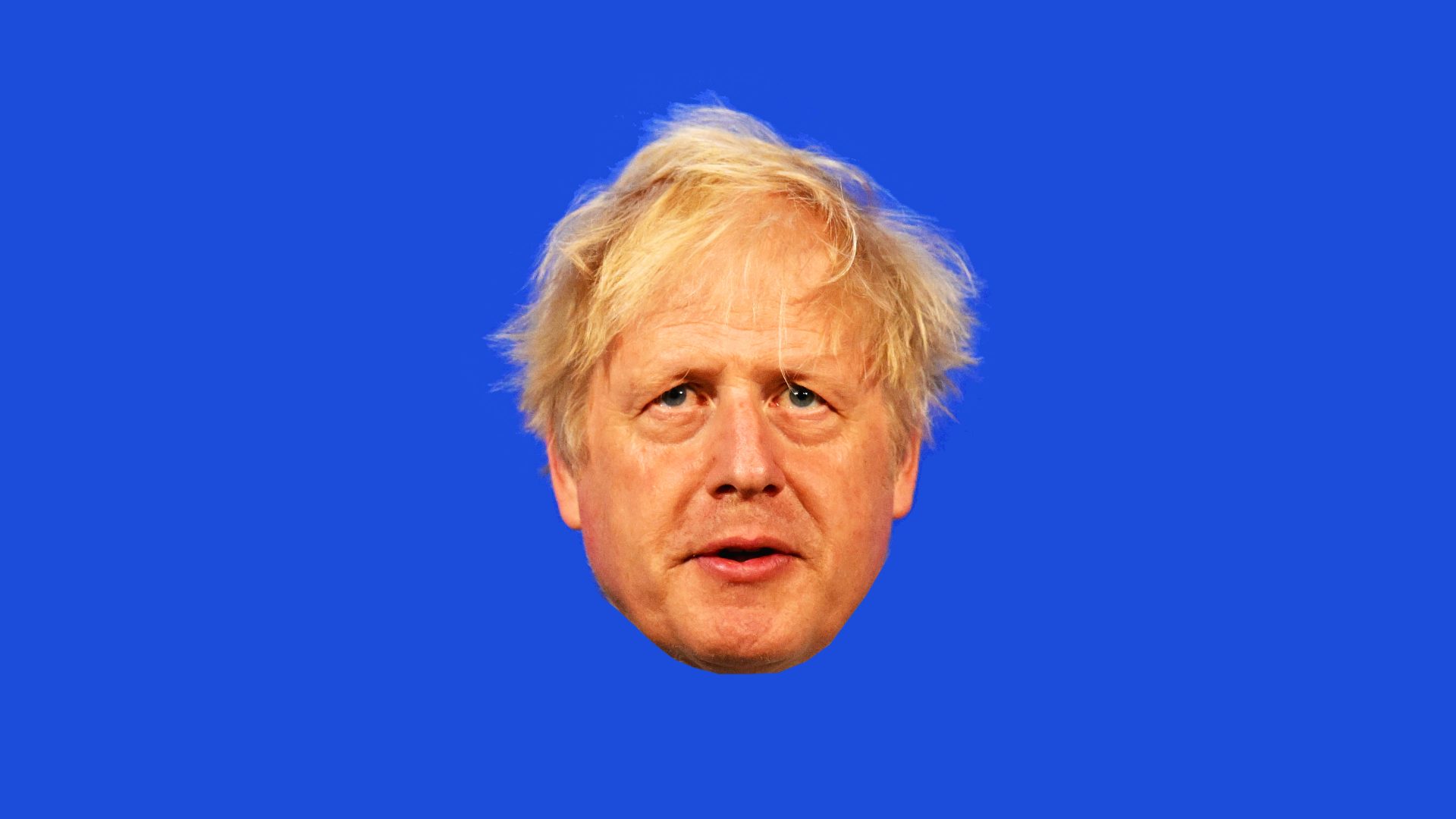If your shelves are heaving with books telling you French women don’t get fat or outlining how Italians can eat pasta yet not gain weight, throw them out.
The enduring image of sophisticated Europeans staying lean on traditional diets of bountiful fruit and vegetables, fresh fish and un peu de vin is being swept away by an “obesity epidemic” gripping the continent, with nearly a quarter of adult Europeans at greater risk of disease, disability or death due to the condition – that’s three times the rate in 1979.
As the number of overweight adults is also getting worse by the day, only around 40% of all adults are considered a healthy weight now. According to a new report by the World Health Organization (WHO), every single one of the 54 countries in its European region will miss their target to halt the dangerous rise in obesity by 2025 as the current prevalence of too much processed food, sedentary work and so-called “obesogenic environments” changes bodies and imperils lives.
The report makes depressing reading. Among some of the more startling figures, 39.2% of women in Turkey have obesity (Body Mass Index above 30), and 73% of Maltese men are overweight (BMI above 25) or obese. Both these countries top the overall obesity and overweight tables, with the UK close behind, with 63.7% of all adults overweight (including obesity) and nearly a third grappling with obesity.
More worrying still is the steady rise in childhood obesity. Nearly 8% of under fives – 4.4 million across the region – plus one in three school-age children and one in four adolescents were also overweight or obese. Some 42% of Italian five- to nine-year-olds are overweight or obese, while 17.8% of this age group in Italy and Greece have obesity. The authors of the report – followed just weeks later by equally stark Eurostat data – linked obesity to 1.2 million deaths and 200,000 new cancer cases annually. Alarmingly, this was based on available national data from 2016.
“So they’re actually completely outdated – now it’s even worse,” Professor Chantal Julia, nutrition epidemiologist at Sorbonne Nord University, told me. There’s no reason for not reaching American levels of obesity (predicted to be 40% for women by 2030), she warned, if things continue as now.
All this matters way beyond some people feeing displeased by extra weight. Obesity has been linked to 13 types of cancer, including breast, liver, oesophageal and pancreas, cardiovascular risk, diabetes, and musculoskeletal complications. It’s already burdening national health coffers. Covid hit the overweight hardest and the OECD forecasts that member countries will be spending an average 8.4% of their overall health budgets between 2020 and 2050 treating the consequences of excess weight.
“If we fail to follow up on this critical situation, we will soon face emergencies far greater than the pandemic,” Enzo Nisoli, scientific director of the Center for Obesity Studies in Milan, told me. “For at least two decades, experts have been discussing obesity in terms of an epidemic and projecting it to pandemic levels within a few years.”
The WHO European region spans 54 countries from Kazakhstan to Finland and Portugal, and nowhere is exempt from alarming obesity rates. Just the range of countries most affected shows the scale of the problem.
At the top of the list with 32.1% obesity, Turkey is a large middle-income country bridging Europe and the Middle East. Next comes the island of Malta, an advanced economy in the Mediterranean, where obesity levels of men and women were both around 29%, while combined overweight and obesity levels topped 66%. Countries with a quarter or more of their population classed as obese included Hungary, Lithuania, Israel, Czechia, Andorra, Ireland, Bulgaria and Greece.
The slimmest tended to be less wealthy states on the fringes, with Tajikistan the only country with obesity levels less than 10%. Denmark and Italy were lowest in the European Union, at 19.9% and 20.1% respectively, but they were higher up for combined overweight and obesity.
Unsurprisingly, given its affinity with American culture, the UK ranks high for obesity. Yet last month the government decided to delay much-anticipated measures such as banning “buy one get one free” deals on unhealthy food and advertising restrictions on junk food – supposedly to alleviate the cost-of-living crisis – sending horrified anti-obesity campaigners into a spin and chef Jamie Oliver on to the streets to demonstrate against Eton-educated Boris Johnson with an Eton Mess pudding.
But what about the rest? The WHO tables are grim across the board – and far from the figures being skewed by northern countries with stodgier traditional fare, it’s southern Europe, with some input from central Europe, that performs badly. The top 20 countries for combined overweight and obesity include Belgium, Croatia, Montenegro and Cyprus. Even France, whose women famously “don’t get fat” according to a recent bestseller, was in there – nearly 60% of France’s population was overweight or obese before the pandemic (52% just for women), with obesity levels around 22%. Like many other countries enduring lockdowns, France now faces a post-pandemic surge of weight problems that threatens public health, despite its worship of slimness, as it follows in the footsteps of fast-food-eating Americans.
While the “what” of rising obesity is evident, the exact “why” is trickier. Although often defined by a simple calculus of more energy in through food than out through exercise, the reasons behind obesity are much more complicated than the sloth and gluttony depicted in fat-shaming Op-Eds. One specialist said if she could comprehensively answer my question about exactly how someone slips into obesity she “would be a genius”.
On one level, the spread of obesity over the past few decades is a response to food and lifestyle changes brought about by globalisation, consumerism, processed food and the car. “We’re not more lazy than we used to be, but our environments have changed more than our biology or willpower,” Julianne Williams, WHO technical officer for non-communicable disease prevention, told me.
Nisoli describes obesity as “a true polyhedron with many faces, each linked to the others in close genetic, pathophysiological and behavioural relationships”. Behind this description lie many factors, including the sedentary nature of today’s work. Where previously large swathes of the European workforce once had active jobs, now we sit chained to our desks.
Post-pandemic home working robs us of even the minimal activity of commuting. Public transport is increasingly unsatisfactory, and urban environments, including amenities, are designed around cars, not people. The lower the income, the greater the likelihood of living somewhere with few green spaces for exercise, too far away to walk or cycle to work or school, where fresh-food outlets are scarce and fast-food joints are abundant – adding up to create so-called “obesogenic” environments. Their residents are likely to lack the time and money needed to make healthy food.
“When you live in a vulnerable neighbourhood it takes more effort to eat healthily,” Prof Julia said. “Food is also a way to indulge consumerism with limited means. Buying Nike shoes may be above your pay grade but buying food advertised on TV isn’t.”
Inequality divides people by weight. In the UK there’s more obesity in the less affluent north and inner cities. In Italy, northern areas around Milan have Scandinavian-level BMIs while the poorer south around Naples and Sicily have major weight problems.
It was in Italy that the US physiologist Ancel Keys spent much time researching the link between heart disease and food on his way to coining the term “Mediterranean diet” for its healthy combination of legumes, fruit, vegetables, whole grains, nuts, unsaturated fats and fish. While Keys lived to 101, the diet he described hasn’t survived intact.
“Maybe 5% of the Italian population eat the real Mediterranean diet now,” Angela Spinelli, director of the National Centre for Disease Prevention and Health Promotion at the Italian National Institute of Health, told me. “Now people eat meat three or four times a week and fish much less often. Portions are bigger – Mediterranean diet portions were small.”
At least Italian adults had early exposure to healthy diets, which is vital for later weight control. This is surely a factor in their relative slenderness. Not so their children, who between five and nine years have the greatest obesity levels in Europe. With a predisposition to obesity programmed at the very start of life – even the weight of the parents at conception can have a bearing – this is disastrous. In France, even the good habits that remain, like healthy family meals and near-universal school lunches, aren’t enough to stem the tide of child obesity, despite a slowdown in the past decade. Recent regional pre-school data in Val-de-Marne shows obesity levels nearly doubling in three years to 4.6% in 2021.

Other former Mediterranean diet countries Greece, Malta, Spain, Portugal and Cyprus also scored high for childhood obesity, above both Turkey and the UK.
The problem – as with pretty much everywhere else – has been the proliferation and cheapness of processed food, full of sugar and salt and E-numbers, a seemingly inevitable outcome as countries grow richer.
The peasants whose eating habits Keys analysed in the 1940s weren’t deliberately following a healthy diet, it was just available and cheap. They probably dreamed of earning more and buying meat, which is what they eventually did, along with processed dinners, bread, burgers, chicken nuggets and fizzy drinks.
Malta’s desperate government set up a taskforce to solve obesity – blamed on any number of factors from a love of cars, lack of cycling opportunities and the pitiful state of PE lessons, to its traditional pastizzi pastries and ubiquitous junk food.
Turkey’s own version of the Mediterranean diet is fast unravelling as outdoor markets selling fresh food cede precedence to western-style fare and supermarkets – often franchises of European businesses such as Tesco or Carrefour. Even Ramadan meals now come with Coca-Cola.
With the reduction of manual work in agriculture and industry, Turks have become startlingly sedentary, with an estimated three-quarters of adults exercising less than the recommended minimum 150 minutes a week. For women, marriage and children in their 20s starts the weight gain. But in his pre-pandemic presentation to parliament, WHO consultant Dr Tufan Nayir said: “Fast food is a big culprit.” Lack of government regulation on food, allowing Turkish retailers to sell products with up to four times the sugar content as a country such as Canada, made things worse: “If we can’t provide a healthy living environment, we can’t even talk about combating obesity.”
Throughout the WHO report, academic papers and conversations I had for this article, the finger points to the role of big food businesses – lobbying their way through growing evidence against their practices, like the fossil fuel industry playing down its known role in climate change. But a closer comparison might be the big tobacco of old, which twisted statistics, promoted false advertising about its products being so “healthy” that doctors used them, and framed arguments for politicians to spout – such as the current fallacy that banning unhealthy BOGOFs is bad for the poor.
And like tobacco, a lot must be thrown at the powerful food industry to stop it pumping out unhealthy food, Nick Townsend, senior lecturer in health at Bath University, told me. Policy-level interventions, taxes, laws on age limits, plain packaging, health warnings, banning it in cars and other closed places and support for those trying to quit, all helped to denormalise smoking and tobacco. He said: “Denormalising removes the arguments. Now tobacco companies are not in the room.”
But food companies are. And from there they help to soften policy. The way farming support frameworks are organised doesn’t help, with the British government in effect subsidising sugar beet. The EU’s Common Agricultural Policy similarly distorted subsidies in Europe when it liberalised the sugar sector. To help reduce obesity, subsidies should be moved to fruit, vegetables and other healthy food, Townsend argues. Currently only Latvia, Slovakia and Spain do this.
Brexit will make things worse, since the UK imports most of its fresh fruit and vegetables, all becoming more expensive due to tariffs and checks. The loss of EU fruit pickers is another blow to healthy diets as produce rots in the fields. All while big food continues to push back on sugar levels and advertising bans.
Instead, we get child-focused advertising of junk food through online games and commercial television. A study last year on digital marketing by the Oslo Metropolitan University found that eight out of 10 food and drink advertisements aimed at children in Norway promoted unhealthy nutrition – 90% didn’t even violate national regulations, sparking calls for tighter rules.
There’s overwhelming evidence that such marketing can influence children’s knowledge, attitudes and food choices, yet a big recent trend is the rise of “celebrity meals”. This involves big brands hooking up with stars such as Justin Bieber and Megan Thee Stallion to push heart-attack-inducing new or rebranded food, with the implication that celebrities hitherto known for their steamed fish fetish can guzzle oversized burgers and fried sugar snacks without expanding.
Even against the odds, some anti-obesity methods have had success, albeit slightly. After a concerted health campaign and advertising restrictions, Portugal found child obesity had decreased and physical activity increased between 2008 and 2016. Now North Macedonians are talking to policy leaders there. Yet overall obesity and overweight levels remained high, with time spent playing computer games – a factor in child obesity – up and eating habits no better than before. Improvements can be fragile.
In Italy, Spinelli said awareness campaigns helped to persuade mothers from the south to take children’s weight gain seriously. A government action plan on nutrition and physical activity was held to have slowed German child obesity increases in the past decade. France has developed a network of specialist obesity centres, while Croatia’s first lady, an obesity researcher, is taking on an advocacy role.
WHO recommendations include cutting salt content in food, taxing sugary drinks, nutritional labelling on packaging, and limiting package sizes. Some policies are already part of the UK’s food strategy, which is being closely watched in other European countries – making delays to measures such as a pre-watershed ban on junk food advertising all the more disappointing.
But really, no country has cracked it. Not even Scandinavians – whose high welfare, relatively safe social democratic societies, low corruption and strong policymaking create better environments for healthy lifestyles. Scattered throughout the WHO report are several case studies from across Europe showing those seeking help being handed leaflets and told to diet with little follow-up or tailored help – even after drastic bariatric surgery. Some were young sportspeople, whose every nutritional input was monitored while training but who were left to drift after leaving elite sport.
One thing is certain, putting the onus on individuals hasn’t worked. Ultimately, says Nisoli, two things are key – government regulation to reduce unhealthy environments and products, and the recognition of obesity as a chronic disease.
When I discuss this with Danish paediatrician Jens-Christian Holm, who has used his 25 years of experience working with children to develop his Holbaek method to reduce juvenile obesity, he agrees wholeheartedly. “Having trained as a paediatrician it is very obvious to me that we need to provide children and adults with obesity the same service that paediatricians do to other patients with chronic diseases such as asthma or diabetes,” he told me.
Holm’s method, which teaches across Denmark and abroad and is backed by peer-reviewed papers, involves a lengthy questionnaire and character study, leading to a bespoke holistic and healthy eating and behavioural plan for young patients, including bedtimes and reduced screen time.
He involves families in the treatment, and follows up after two to three months. Holm says more than three-quarters lose weight and diminish related complications.
“What’s crucial is to understand fat mass regulation – that fat mass actually defends itself in the body,” he told me. “This entirely disqualifies the concept of motivation,” meaning the health professional, not the patient, is responsible for treatment. Fat cells are active elements fighting to keep hold of their gains – especially if you go on a calorie-counting diet – for future energy needs.
It’s hard to see how obesity can be stopped in this climate of populism, car dependency and war. Covid has brought increased comfort eating and inactivity, and proliferating delivery apps that the WHO believes will make things worse. No need to even walk a few steps for a chippie.
But for children, it’s vital that adults ensure the war is won. “After climate, obesity is probably the biggest threat to children in the next 30 years,” said Holm. “Our children are at stake here. If we don’t act, children living with obesity will be the unacceptable consequence.




